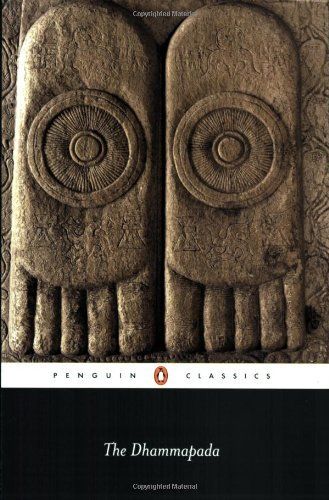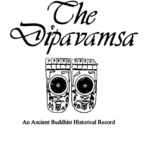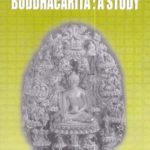
The Dhammapaadha is one of the best known works on the philosophy of The Buddha. More importantly, it clarifies and reifies many aspects of his essential teachings. In the rivalry between sampradhaayas, there is often a no-holds-barred effort to show another in a detrimental or even similar light. After all, if the other philosophy has the same ostensible “defects” than there is no reason for those of middling mindset to make a change of affiliation.
However, it is imperative for all Dharmas, be they Vaidika, Bauddha, Jina, or Sikh to be appropriately rooted in Sathya. Truth, after all, is the most fundamental principle to all these distinct and separate Dharmas. Furthermore, in respecting the distinctiveness of each dharma, harmony is more likely in society and civilization.
Vaidika Dharma is assuredly the ancient-most (since all others discuss how they were there to ‘reform’ it anyways). So if reform were the basis, one must have been ‘reforming’ what had previously come before. However, practicioners of Vedic Dharma often forget that Dharma and Rta are both rooted in Sathya. Ritual certainly has its place, but it is not the only thing, leave aside the central thing.
“Two verses of the Bhagavad gita might refer to those two wrong paths: There are men who have no vision, and yet they speak many words. They follow the letter of the Vedas, and they say: ‘there is nothing but this’.
Their soul is warped with selfish desires, and their heaven is a selfish desire. They have prayers for pleasure and power, the reward of which is earthly rebirth.II. [1, 42-43]
But in the centre there is the narrow path that leads to the top of the mountain. That path suggests a harmony in life: ‘not for him who eats too much, nor for him who eats too little; not for him who sleeps too little nor for him who sleeps too much’, as the Gita says in 6.16.” [1, 25]
Truth (Sathya) is central and essential to Dharma. Those who emphasise ritual over truth are those who seek to mire the naïve in a web of false-hood. As Siva trampled upon Apasmaara, so too did The Buddha defeat the demon Maara. Practicioners of the “Aariya Dhamma” (be they Vedic or Bauddha in sampradhaaya) do not worship Asuras—how could they? Therefore, those blindly doing rituals to Asuras for material gain are those who are no longer Aaryas and are fit to be bahishkar’d, be they Brahmana or Bauddha.

Indeed, that is the story of the branching off of the Yavanas from the Aarya Janatha (nation of Aryas, which the Bhaaratheeyas of old called themselves). Yavanas were no longer part of the Aarya/Vedic Nation because they began engaging in forbidden practices and worship of Daithyas. Seeing the error of their ways, these Yavanas later took to the “Aariya Dhamma” of Aariya Thathagatha, better known as Siddhartha Gauthama.
Milinda, in fact, was not a Greek, but a Yavana Bhaaratheeya, whom Puraanik Records date to ~1200 BCE. It was Ashoka and Milinda who were instrumental in the propagation of the Buddhist Faith. The Yavana nation (western Indus & southern Afghanistan) would later expand further west, creating the Paarasika nation (Persian ethnicity) going as far west as Greece (if not beyond). Taking with them the doctrines of the Buddha, they undoubtedly had a philosophically impact on account of the flexibility which the uber-orthodox Vaidika Dharma simply cannot have.
However, in spreading West and North, and mixing with local religions (Mediterranean and Bon), asuric aspects began to graft themselves more deeply onto the Dhamma. It is therefore of utmost importance that Bauddhas and Vaidikas alike reject the influence of ritual-obsessed kaapaalikas. Let the aastika Veda Brahmana and Ashtaangika Maarga-dedicated Bhikkhu practice per sacred rite, but let these asuric practices be rejected by all honest Acharyas.
Authentic Vaidikas & true Bauddhas have nothing in common with the occultic “pagan” Druids of the west. Dharma is not “Paganism” and Acharyas, Bhikkhus, and Bodhisathhvas are far beyond such barbarian Druids and their deceitful shenanigans. The same wretches who preach the falsehood of “Beef in Vedas” and sordid occultic practices are the ones which prioritise ritual over all other things.
 Historically, even Bauddha Dharma established the sanctity of the cow, so how can ‘Aariyas’ have any association with such false doctrines? This of course is not pretext for ethnicism. Bauddha Dhamma is the great Dharma for the world and for all nations—only in order to protect each nation and its nationals, it is best if their teachers concentrate on teaching their own rather than on ‘infiltrating foreign doctrines’ into others. There is indeed 1 Humanity and, contrary to jaathivaadhis, only 1 human race (maanava jaathi); however, ethnicity is real, and each ethnicity should be respected and entrusted with the responsibility of (eventually) teaching the dhamma to their own nation. The naïve and innocent initiates must no longer be led astray by those imperialist imps of apasmaara who egotistically misuse religion for exploitation of the masses. The 8 Fold Path was given by Bhagvaan Buddha for protection of the masses rather than for exploitation. The Dhammapaadha is one of the many simple but powerful texts that can serve to protect the true saadhaka.
Historically, even Bauddha Dharma established the sanctity of the cow, so how can ‘Aariyas’ have any association with such false doctrines? This of course is not pretext for ethnicism. Bauddha Dhamma is the great Dharma for the world and for all nations—only in order to protect each nation and its nationals, it is best if their teachers concentrate on teaching their own rather than on ‘infiltrating foreign doctrines’ into others. There is indeed 1 Humanity and, contrary to jaathivaadhis, only 1 human race (maanava jaathi); however, ethnicity is real, and each ethnicity should be respected and entrusted with the responsibility of (eventually) teaching the dhamma to their own nation. The naïve and innocent initiates must no longer be led astray by those imperialist imps of apasmaara who egotistically misuse religion for exploitation of the masses. The 8 Fold Path was given by Bhagvaan Buddha for protection of the masses rather than for exploitation. The Dhammapaadha is one of the many simple but powerful texts that can serve to protect the true saadhaka.
“Buddha found NIRVANA, the union of the finite with the Infinite, that Truth that according to the Kena Upanishad, ‘comes to the thought of those who knew him beyond thought, not to those who think it can be attained by thought’. It is the Nirvana mentioned in the Bhagavad Gita when it says:
‘The Yogi who, lord of his mind, ever prays in this harmony of soul, attains the peace of Nirvana, the peace supreme that is in me. 6.15.” [1, 15]
Author

Who authored the Dhammapaadha? This is a question which is often elided by both scholars and amateurs alike. After all, in the present time, reference and authorship is of prima facie necessity. Well, the answer is quite simple: “In the Dhammapada we can hear the voice of Buddha” [1, 33]
If this is the case, then what is the purpose or message he brings to bear?
“The message of Buddha is in the Dhammapada, and the hearing of this message is joy:
‘Even as a lake that is pure and peaceful and deep so becomes the soul of the wiseman when he hears the words of Dhamma.’—Dhammapada 82” [1, 33]
There are numerous questions, of course, regarding the actual dating of the Buddha, and thus, by extension, the Dhammapaadha itself. Although Thathagatha is, per Western Chronology, presently placed in the 6th Century BCE, the Hindu Puraanik tradition considers him to be much older (~1800 BCE). The Dhammapaadha is, much like the Thipitaka, considered to be only a few centuries subsequent to the Saakyamuni.
“When the Dhammapada was compiled, probably during the third century before Christ, a few ideas common to Indian thought may have been used, and original verses of the Dhammapada may in turn have found their way into Indian writings. If we select a few verses from the Hitopadesa, we may find the spirit of gentle irony and wisdom found in some verses of the Dhammapada:
‘Of what use are words of wisdom to the man who is unwise? Of what use is a lamp to a man who is blind?
Hear the essence of thousands of sacred books; to help others is virtue: to hurt others is sin.’
But that the spirit of the Dhammapada is the spirit of Buddha is accepted both by his followers and by scholars. Buddha wants us to stop the wheel of becoming so that we can rest in the centre of Being.” [1, 27]
“Buddha left for the great adventure of all men who long for life and ‘having put his hand to the plough’ he never looked back. His spiritual struggle lasted for six long years until at last, in despair, he sat under the Bodhi tree with the heroic determination either to die or to find eternal life.” [1, 14]
The path of the Dhamma is the path of the Buddha. His tremendous contributions to mankind, moving it beyond trivial matters like class and wealth is emblematic of why the Dhammapaadha is his by extension, if not direct compilation.
“During that night Buddha saw the Wheel of becoming, the Four great truths, the Path of eight perfections, the Middle Way and at last Nirvana, Truth.” [1, 14]
“Beyond becoming there is Being, and from Being comes love and comes the good and the beautiful” [1, 14]
Ultimately, this collective work of the Buddhist Sangha—the Dhammapada—is credited to the Buddha as it is his wisdom, or Buddhi, which is presented.
“The Word Buddha comes from the root Budh, to be awake, to be conscious of, to know. From the same root comes the word Buddhi found in the Bhagavad Gita and meaning difference contexts; intelligence, reason, vision, wisdom. It is the faculty of man that helps him to distinguish what is good and beautiful from what is evil and ugly, what is true from what is false” [1, 10]
Composition

The dhammapada is divided into 26 chapters, which such headings as “Contrary Ways”, “Watchfulness”, “The Wise Man”, “Self-Possession”, “Righteousness”, and “The Brahmin”. The latter may cause one to be taken aback until one realises that the Buddha believed and asserted that Bhikkhus were those who were Brahmanas by quality rather than merely those by birth.
“Not because of matted hair, family or birth is one a true brahmin” (ch. 26, v.23)
As such, there is much intersection between the Vaidika and Bauddha Dharma. The question of who is a true Brahmin is one that has punctuated many a debate, both ancient and modern. The Saakyamuni has clearly stated his view here. It is for this reason, Bauddha Dhamma stands above caste.
Bodhisathhvas may be born only in the Kshathriya or Brahmana varna (to preach to both arrogant and humble), but Bhikkhus or (Bauddha Brahmins) may come from any community per the Buddha himself. Of central import, however, is Sathya and Dhamma.
“The word Dhamma is of supreme importance in Buddhism, and behind the mere word there is the highest spiritual mean-ing. Dharma comes from the Sanskrit root DHR, which carries the meaning ‘to support, to remain; and thus ‘law, a moral law, a spiritual law or righteousness, the eternal law of the Universe, Truth’.” [1, 9]
“Paadha, both in Sanskrit and Pali, means ‘foot, step’ and thence has the meaning of a path. Thus Dhammapada suggests the Path of Dhamma, the right path of life which we make with our own footsteps, our own actions, and which leads us to the supreme Truth. The Dhammapada is the path of Truth, the path of light, the path of love, the path of life, the path of Nirvana.” [1, 9]
The work Dhammapada was composed by an anonymous compiler who collected various aphorisms and teachings of the Buddha. It consists of 423 verses presented in 26 chapters. [2, 4] It is attached to the Sutta Pitaka. While there might be nuanced differentiations between Dhamma of Bauddhas and Dharma of Vaidikas, the broad thrust of meaning remains the same.
“The Pali word Dhamma corresponds to the Sanskrit Dharma, the first word of the Bhagavad Gita when the field of Dharma, the field of Truth, is mentioned”. [1, 9]
“Pali, the language of the Buddhist scriptures of Ceylon, Burma and Indochina, is connected with Sanskrit just as Italian is connected with Latin.” [1, 9]
Selections

§
“Tradition tells that when Buddha found Nirvana under the Bodhi tree, he poured out his joy of liberation in the two famous verses of the Dhammapada:
1.‘ I have gone round in vain the cycles of many lives ever striving to find the builder of the house of life and death. How great is the sorrow of life that must die!
But now I have seen thee, housebuilder: never more shalt thou build this house. The rafters of sins are broken, the ridge-pole of ignorance is destroyed. The fever of craving is past: for my mortal mind is gone to the joy of the immortal Nirvana, 153-4. [1, 15]
Anekajātisaṁsāraṁ sandhāvissaṁ anibbisaṁ
gahakārakaṁ gavesanto: dukkhā jāti punappunaṁ.
Gahakāraka diṭṭhosi! Puna gehaṁ na kāhasi:
sabbā te phāsukā bhaggā, gahakūṭaṁ visaṅkhitaṁ,
visaṅkhāragataṁ cittaṁ, taṇhānaṁ khayam–ajjhagā.|| (ch.11,v.154)
§
2. Kumbhūpamaṁ kāyam–imaṁ viditvā,
Knowing this body is (frail) like a jar,nagarūpamaṁ cittam–idaṁ ṭhapetvā|
establishing the mind like a fortress,yodhetha Māraṁ paññāvudhena,
fight Māra with the weapon of wisdom,jitañ-ca rakkhe, anivesano siyā.||
guard your success, and do not be attached. [2, 5]
§
3. Na pupphagandho paṭivātam-eti, na candanaṁ tagaramallikā vā|
satañ-ca gandho paṭivātam-eti, sabbā disā sappuriso pavāyati.|| (ch,4, v. 54)
“The perfume of flowers goes not against the wind, not even the perfume of sandalwood of rose-bay or of jasmine; but the perfume of virtue travels against the wind and reaches unto the ends of the world. Dhammapada.54 [1, 29]
§
4. Na jaṭāhi na gottena, na jaccā hoti brāhmaṇo,
Not because of matted hair, family or birth is one a true brahmin,
yamhi saccañ-ca Dhammo ca, so sucī so va brāhmaṇo.| (ch.26, v.393)
in whom there is truth and Dhamma, that one is pure, that one is surely a brahmin. [2, 139]Na cāhaṁ brāhmaṇaṁ brūmi yonijaṁ mattisambhavaṁ,
I do not call one a brahmin simply because of being born from a (certain) womb,bhovādī nāma so hoti sace hoti sakiñcano;|
that one is just one who says ‘bho’ if he is attached;akiñcanaṁ anādānaṁ, tam–ahaṁ brūmi brāhmaṇaṁ.| (ch.26, v.396)
having nothing and unattached, that one I say is a brahmin.Yodha puññañ-ca pāpañ–ca ubho saṅgaṁ upaccagā,
Whoever here has overcome clinging to both merit and demerit,asokaṁ virajaṁ suddhaṁ, tam–ahaṁ brūmi brāhmaṇaṁ.|| (ch.26, v.412)
who is griefless, dustless and pure, that one I say is a brahmin. [2, 142]§
5. Sabbapāpassa akaraṇaṁ, kusalassa upasampadā|
sacittapariyodapanaṁ – etaṁ Buddhāna’ sāsanaṁ|| (ch.14, v.183)
“Do not do what is evil DO what is good. Keep your mind pure. This is the teaching of Buddha. Dhammapada 183” [1, 21]
§
Click here to Buy this Book!!!
References:
- Mascaro, Juan. The Dhammapada. Penguin: London. 1973
- Anandajyoti, Bhikkhu Ed. ‘Dhammapada’. Ancient Buddhist Texts. (Aug.12, 2022) https://www.ancient-buddhist-texts.net/Texts-and-Translations/Dhammapada/Dhammapada.pdf



